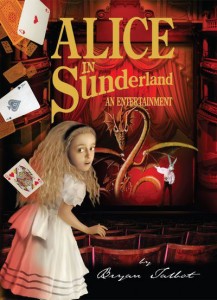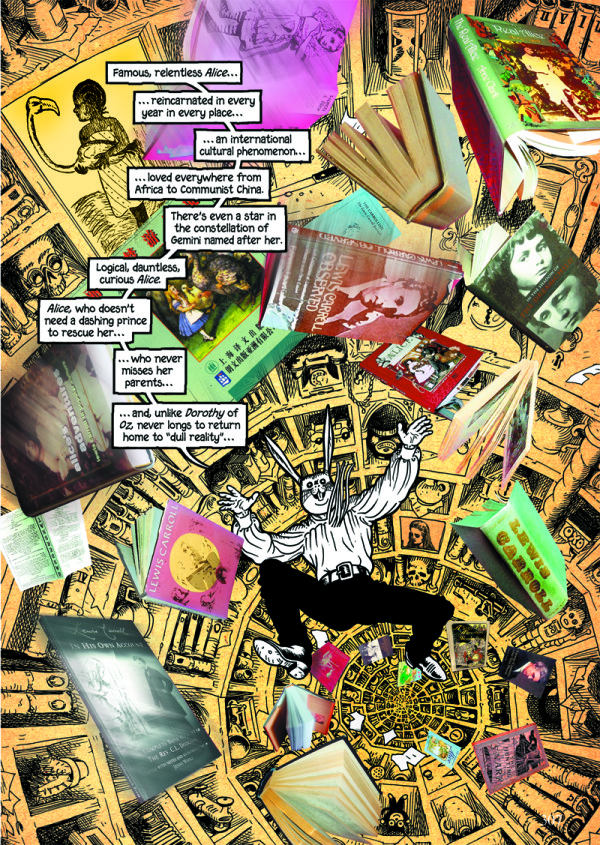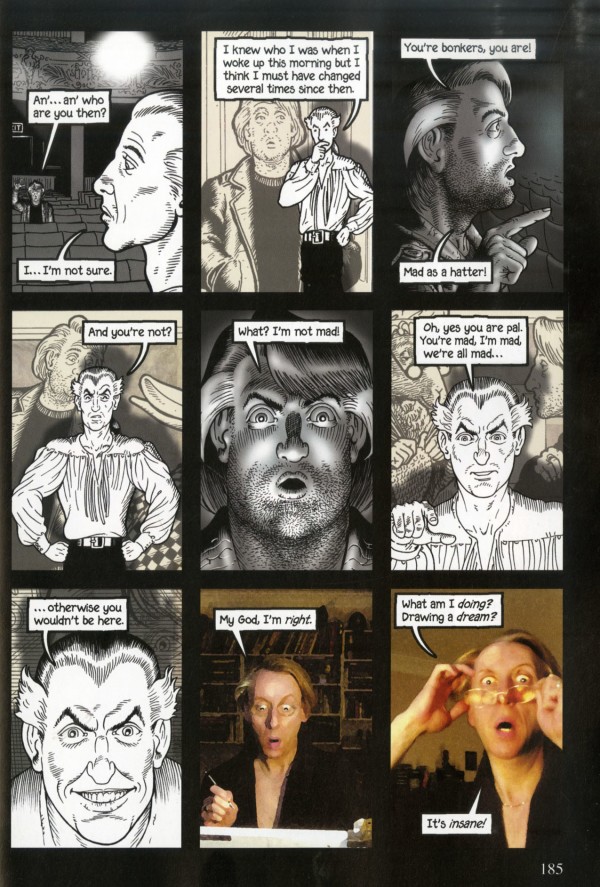What We’re Reading: Alice in Sunderland

 Alice in Sunderland by Bryan Talbot (Dark Horse, 2007)
Alice in Sunderland by Bryan Talbot (Dark Horse, 2007)
When Alice in Sunderland came out, I recall seeing a number of reviews saying that it would make the “Best Of” lists that year, but I paged through it in a store and was turned off by all the computer effects used in making the many collages throughout the book. I also thought it was just a remix of Alice in Wonderland coupled with a biography of Lewis Carroll, which felt like an easy cash-in to fans of the book and its history.
When I finally did read it, I was still a little turned off by the computer filters on a lot of the art, as seen here…
…but I think that’s just a personal quirk of my tastes that comes with growing to maturity alongside Photoshop. Talbot’s more traditional cartooning is present throughout the book and is as good as its ever been: a clear and emotive style with a strong eye for dramatic framing.
I was very happy with what Alice was actually about. It is sort of a remix of Carroll’s classic in that someone goes on a phantasmagorical journey, and it is sort of a biography of Carroll besides. In its fullness, though, it’s really about the history of England’s encounters with outsiders and the stories people tell themselves in order to understand that history their place in it.
Carroll’s purpose in the story is that both Oxford and Sunderland have “claimed” him as their own, and in examining Sunderland’s influence on Carroll and his works, Talbot, a Sunderland resident, gets drawn into the web of Sunderland’s history. What he finds is that nothing ends up being purely Sunderland; everything comes from somewhere else, but nothing goes back out without being changed. From the Picts through the Romans to the Anglo-Saxons and the Normans all the way to contemporary immigrants, the identity of a place gets built by the stories left behind by the people who move there, live there, and die there.
Given this, Talbot’s collages are formally appropriate. His cartooning, already shifting chimerically from British boys’ adventure to Beano-style humor, is pasted over and layered with photographs and paintings. The experience of wandering through Talbot’s reconstructions of Sunderland throughout time is a uniquely comic experience, but its lessons on the building of truths and fictions are universal.
It turns out I was completely wrong in my superficial judgment of Alice in Sunderland. Have any of our readers ever cast similar aspersions about a book and come around to love it?







